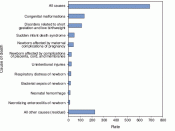In order to to assess the health of an individual group or society , forms of measurements have first to be found. This immediately causes problems. There are two main indicators: mortality and morbidity, where mortality refers to death and morbidity to sickness. Of these two, mortality is the easiest to measure, although the causes of death, both in the long and short term, may be more difficult to ascertain. In the long term, the question 'why did someone die when they find. and of that particular cause?" is one that produces a variety of answers.(Levitas, 1999)At first sight, the biological explanation that an individual can die of 'natural causes,' there is a biological time clock that simply expires at a certain point, is persuasive. Alternatively, someone may be 'unlucky' and develop the symptoms of a terminal illness - it could just as easily have happened to someone else. Sociologists dispute both ideas: that health and illness are simply biological processes or merely matters of chance.
Social CausesAgainst these explanations, the sociological view points to the fact life expectancy varies from time to time, and from place to place. It is higher in an urbanized society than a rural one, and increases as that industrial society develops. Even in an industrial society there are clear differences in life expectancy between social classes, within the occupations constituting each social class, between men and women, between ethnic groups, and between regions.(Levitas, 1999) For most sociologists, the existence of these statistical regularities points to social, economic and environmental causes of mortality, rather than causes based on biology or chance.
The Role of Medicine and the Medical ProfessionA number of reasons have been put forward to explain why life expectancy has increased, including improved diet, declining fertility, sanitation, the decline of infective diseases, and...


